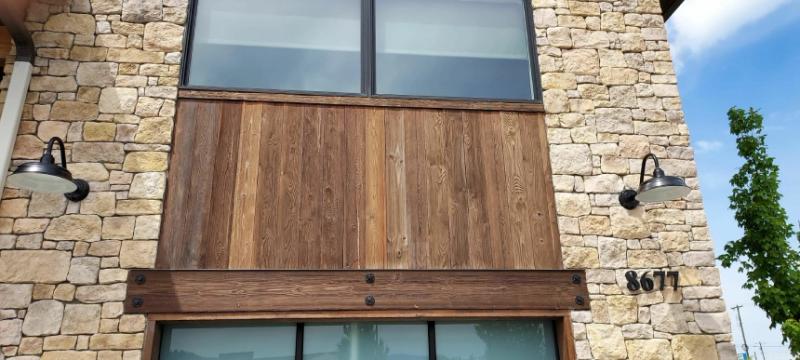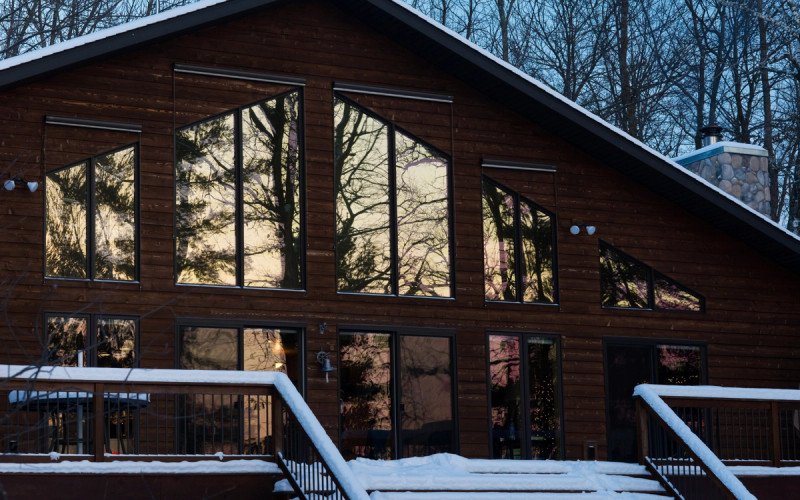In an era of skyrocketing energy consumption, learning how to make your home more energy efficient isn't just a trend—it's a necessity. According to the Center for Climate and Energy Solutions, “Fossil-fuel combustion attributed to residential and commercial buildings accounts for roughly 29 percent of total U.S. greenhouse gas emissions.” Improvements in energy efficiency have led to emissions reductions in the residential homes by 17.3 percent since a 2005 peak, however, there are steps homeowners can take to not only reduce their carbon footprint, but also cut down on utility bills.
The journey to an energy-efficient home begins with understanding its current energy use. A home energy audit, often available for free from utility providers, can pinpoint areas of waste and suggest improvements. From simple changes like using window treatments to more significant investments in energy-efficient appliances, every action helps. Even small steps can make a big impact, transforming your home into a more sustainable and cost-effective haven.

Enhancing Heating and Cooling Efficiency
Update Your HVAC System
Through thermal comfort and energy saving technology, modern heating and cooling systems have the ability reduce overall consumption. Replacing outdated systems with smart HVAC systems can significantly reduce energy usage, which in turn lowers monthly utility bills. General contractors and builders should opt for smart HVAC models with high SEER (Seasonal Energy Efficiency Ratio) ratings for air conditioners and high AFUE (Annual Fuel Utilization Efficiency) ratings for furnaces. Architects can incorporate HVAC systems that integrate seamlessly with prebuilt log-wall panels and panelized full log shear walls, which helps ensure the entire building benefits from cohesive thermal efficient roof construction.
Sealing Doors and Windows
Sealing doors and windows is crucial to maintain energy efficiency throughout your home. The U.S. Department of Energy estimates that weatherizing your home can reduce energy expenses by up to 30%, and correctly sealing doors and windows throughout can enhance your home’s energy efficiency. Homeowners can use rope caulk to seal window edges and cracks, which is cost-effective and simple. For a more durable solution, weatherstrip windows with special lining between the window and the frame and apply weatherstripping around the door perimeter to ensure a tight seal when closed. Quality door sweeps at the bottom of doors further prevent drafts. Builders and architects should consider installing storm windows for single-pane windows and replacing damaged or poorly fitting ones. Integrating thermally treated wood in window frames adds aesthetic value and boosts insulation.
Install a Programmable Thermostat

A programmable thermostat allows homeowners to set temperatures according to their daily schedules, conserving energy when it’s not needed most. This technology ensures optimal heating and cooling usage, which can lead to significant energy savings. Builders can easily incorporate these thermostats during construction, adding value to the property. Architects designing smart homes can integrate these systems with other energy-efficient technologies, creating an interconnected home environment that responds dynamically to the homeowners' needs.
By adopting these strategies, homeowners, contractors, builders, and architects can make homes more energy efficient, particularly in winter. This reduces energy consumption and contributes to a more sustainable living environment.
Optimal Use of Appliances and Lighting
Utilizing energy-efficient appliances and lighting can significantly reduce energy consumption in homes. ENERGY STAR-certified appliances, such as refrigerators, dishwashers, and washing machines, consume less energy and reduce utility bills, contributing to more sustainable homes. Builders and architects should recommend these appliances to clients for better energy efficiency ratings, especially when combined with prebuilt log-wall panels that provide superior insulation. Additionally, opting for LED light bulbs, which use 90% less energy and last up to 25 times longer than traditional incandescent bulbs, can save homeowners $75 per year in energy costs. Replacing the five most frequently used light bulbs with LEDs supports energy efficiency and aligns with advanced building practices like thermal efficient roof construction and panelized full log shear walls. Furthermore, unplugging devices when not in use or using smart power strips to cut off electricity to multiple devices simultaneously prevents energy wastage. Implementing these simple yet effective changes provides immediate and long-term energy savings, reinforcing sustainable living principles.
Water Heating and Usage
Optimizing your home's water heating and usage is crucial for improving energy efficiency, especially in winter. Installing a tankless water heater provides hot water on demand, eliminating standby energy losses associated with traditional storage heaters. For added efficiency, condensing tankless water heaters reuse exhaust gas to heat water more quickly. Additionally, washing clothes in cold water instead of hot significantly reduces energy consumption while preserving garment quality. To further enhance efficiency, hand wash lightly soiled items and ensure dishwashers are fully loaded before running. These practices, combined with advanced technologies, help homeowners achieve better energy efficiency and create more sustainable living spaces.
Insulation and Building Materials

Insulating and selecting the right building materials significantly improves home energy efficiency. Proper insulation minimizes heat loss, reducing energy bills and improving comfort. Targeting the attic can yield substantial savings, as it can account for up to 50% of heating costs. Fiberglass batts are effective for standard joist spacing, while loose-fill insulation is preferred for non-standard spaces. Sealing leaks around electrical outlets, mail slots, and doors with weatherstripping enhances energy efficiency.
Choosing energy-efficient windows, insulated with argon gas and coated with low-emissivity (low-E) glass, helps maintain indoor temperatures and can save up to 50% on energy bills. Additionally, investing in energy-efficient roofing reduces heat transfer and lowers energy consumption. Using reclaimed wood and thermally treated wood offers durability and efficiency, while panelized full log shear walls enhance structural integrity and energy savings. By focusing on these strategies, homeowners, builders, and architects can create energy-efficient homes that provide comfort and sustainability during winter.
Renewable Energy Options
Incorporating renewable energy options greatly improves home energy efficiency offering a sustainable way to reduce energy costs and carbon footprint. Installing solar panels can drastically reduce electricity bills and provide long-term benefits without the need for frequent repairs or replacements. Exploring other renewable energy sources, such as wind turbines, geothermal heat pumps, and biomass energy, adds flexibility and increases overall energy savings. Wind turbines can supplement solar power, while geothermal heat pumps utilize ground temperatures for effective heating and cooling. Biomass energy, derived from organic materials, is a viable heating option, especially when using reclaimed or thermally treated wood. For builders and architects, integrating these renewable energy sources into projects enhances energy efficiency and appeals to eco-conscious homeowners, creating sustainable and cost-effective living spaces.

Conclusion
Enhancing home energy efficiency isn't just about reducing utility bills; it's a critical step toward minimizing environmental impact. By conducting home energy audits, making strategic upgrades, and incorporating renewable energy sources, homeowners can significantly cut down on energy consumption. Simple actions like sealing leaks, updating energy-efficient appliances, and optimizing heating and cooling systems can lead to substantial savings and increased comfort. Embracing these changes benefits the planet and creates a more sustainable and cost-effective living environment. Homeowners are encouraged to take proactive steps today to ensure a greener future.
Project Management
Lead Designer & CAD Technician
After graduating with a Master's Degree in Wood Engineering, Milan started his career by traveling abroad to apprentice with Brian Schafer, Principal of Big Cabin. As an expert in the industry for over a decade now, his passion for log and timber home construction grew deeply throughout his career and ingrained his knowledge of drafting, project management, and roofing design.